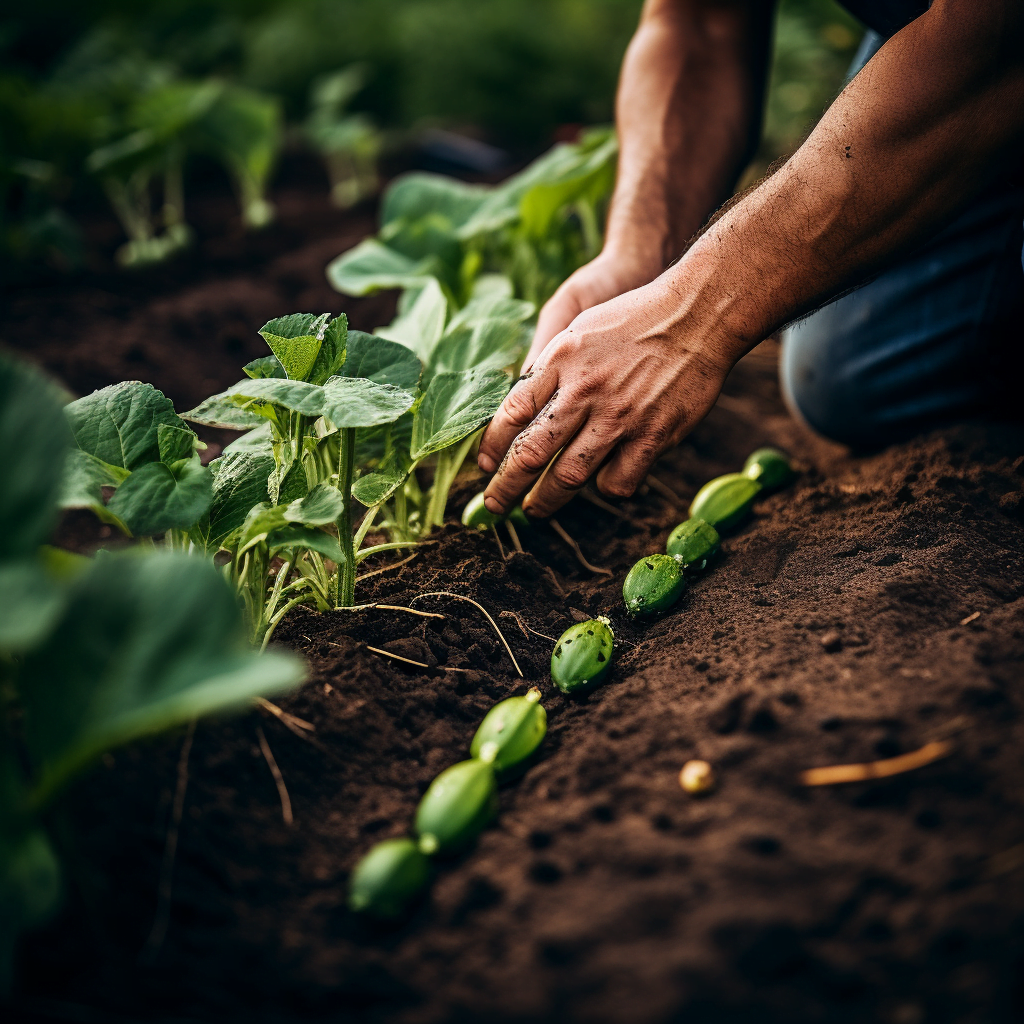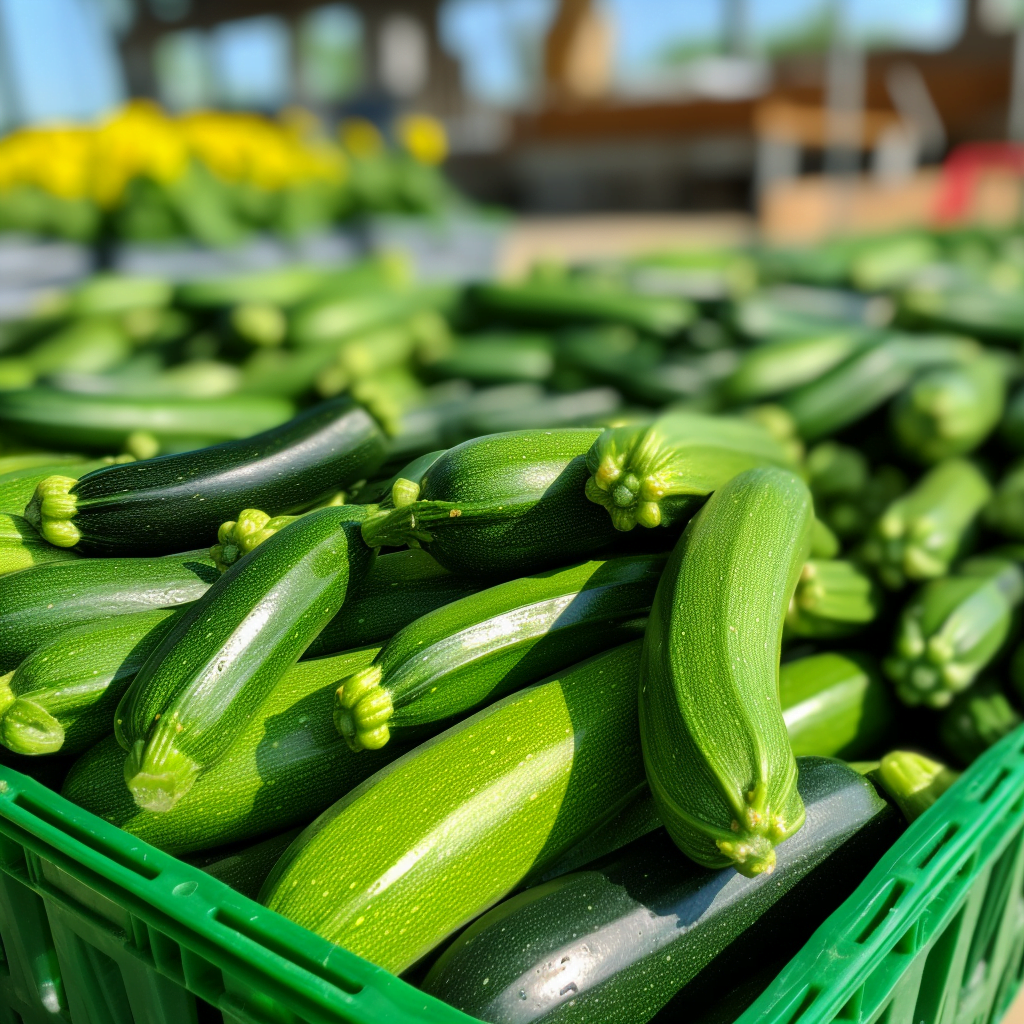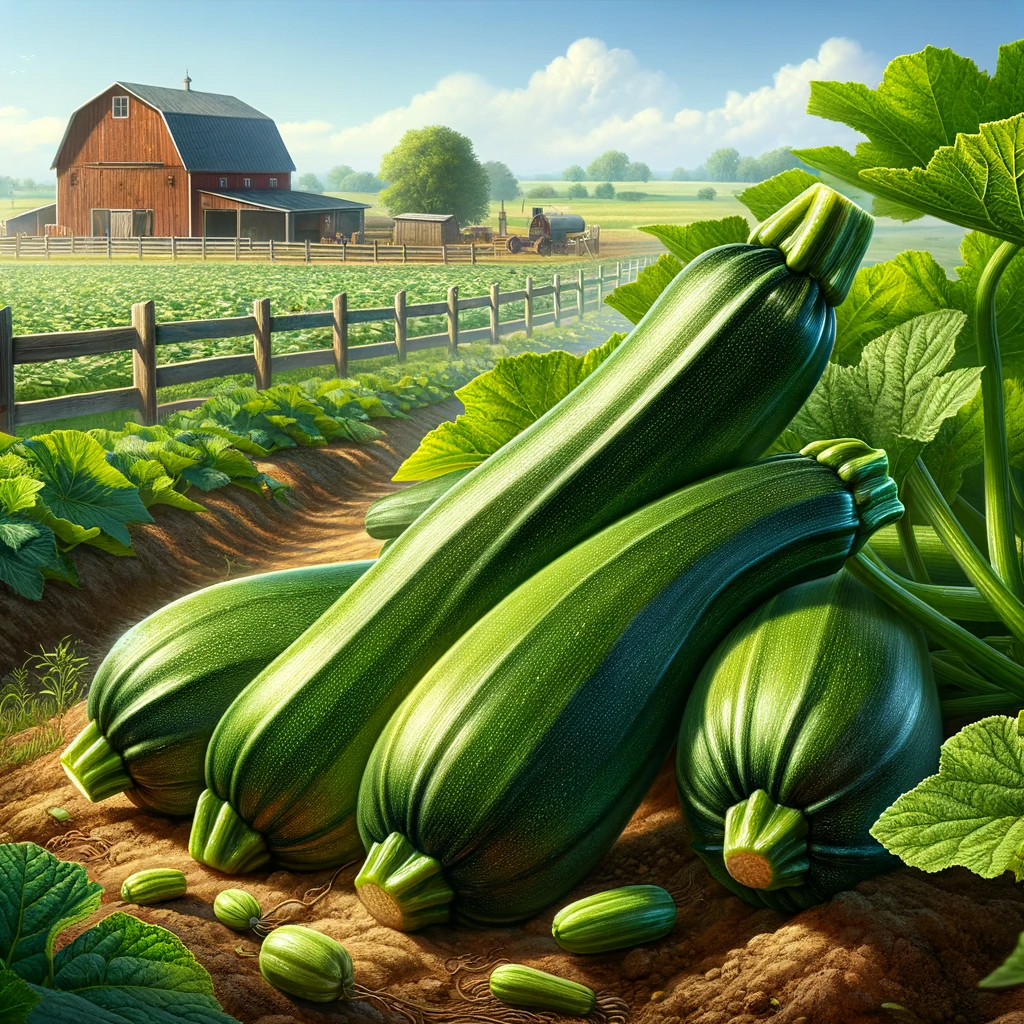Zucchini is one of the most beloved summer squashes grown in Michigan. These quick-growing vegetables thrive during the hot summer months, making them a staple crop for home gardeners and farmers across the state. But exactly When Are Zucchini in Season in Michigan?
Zucchini Growing Season in Michigan
The zucchini growing season in Michigan generally lasts from early July through early September. This warm season crop requires hot temperatures to grow and produce fruit.
Most gardeners can expect their first harvest of zucchini in early to mid July, depending on location and weather conditions. The peak season when zucchini is in plentiful supply runs through August and into early September.
Southern Michigan – Counties like Wayne, Washtenaw, and Monroe tend to enjoy the earliest start to zucchini season. Gardeners in southeast Michigan may see their first ripe zucchini by July 4th in an average year. The season wraps up in early to mid September.
Central Michigan – For areas like Ingham, Clinton, and Eaton counties, zucchini season falls between early July and early September. Mid-July harvest is common, with steady production through August.
Northern Michigan – The cooler climate means zucchini season starts and ends a bit later. Alpena, Emmet, and other northern counties can expect zucchini to ripen in mid-July, with the season lasting into early September.
While these are general guidelines, the actual zucchini harvest dates can vary by up to two weeks depending on planting time, weather, and individual varieties grown.
Factors That Influence Zucchini Season Dates
Several key factors can shift zucchini growing seasons earlier or later within Michigan:
- Spring weather – A cool, wet spring delays growth, while an early warm spring speeds it up.
- First and last frost dates – Frost ends and starts the zucchini season. Later frosts in spring or earlier ones in fall shorten the productive period.
- Sunlight hours – More sun exposure equals faster growth and ripening. Cloudy periods slow it down.
- Rainfall – Too much or too little rainfall affects the timing and yields.
- Temperatures – Heat accelerates growth, while cool weather slows it down.
- Soil fertility – Rich, fertile soil fuels plant growth and fruit production.
- Pest/disease pressure – Heavy pressure can weaken plants and reduce yields.
Paying attention to these seasonal factors can help estimate when your zucchini harvest will start and reach its peak in any given year.
Earlier and Later Producing Varieties
Another factor impacting harvest times is the variety grown. Gardeners can choose from among hundreds of zucchini cultivars suited for Michigan’s climate.
Earlier producers:
- Black Beauty
- Early Prolific Straightneck
- Golden Glory
Mid-season varieties:
- Spineless Beauty
- Green Bush
- Jackpot
Late-season options:
- Sweet Summer
- Zephyr
- Costata Romanesco
Choosing a mix of early, mid, and late-season types extends the potential harvest period.
How the Michigan Climate Affects Zucchini Growth
Zucchini thrives during Michigan’s hot, sunny summers. The temperate continental climate provides ideal growing conditions for warm season crops like zucchini.
Sunlight
Zucchini needs abundant sunlight to fuel growth and fruit production. The long summer daylight hours in Michigan give zucchini at least 6-8 hours of direct sun exposure.
More sun equals faster growth. Cool, cloudy periods slow things down. Positioning zucchini in full sun locations in the garden optimizes sunlight interception.
Warm Temperatures
Warm conditions accelerate zucchini’s growth. Ideal daytime high temps for zucchini fall in the 70-85°F range, with moderate humidity.
Nighttime lows should stay above 50°F. Heat-loving zucchini thrives during Michigan’s hot summers.
Temperatures below 60°F or above 90°F start impacting flower and fruit production. Cool weather slows growth significantly.
Adequate Rainfall
Zucchini plants need around 1-2 inches of water per week from rain or irrigation. Michigan’s summer thunderstorms periodically replenish soil moisture.
But hot spells can deplete moisture reserves. It’s important to water thoroughly during droughts or dry periods.
Too much rainfall can also affect yields. Zucchini plants don’t want overly soggy soil. Excellent drainage is required.
Humidity
Michigan’s humid continental climate provides the right amount of atmospheric moisture for zucchini plants to thrive.
The humid summer air delivers needed moisture to leaves while minimizing water stress. Proper humidity balances soil drying between rainfalls.
Well-Draining Soil
Zucchini prefers loamy, sandy soil that warms up quickly in spring. The moderately fertile, fast-draining soils common across Michigan suit it perfectly.
Heavy clay or compacted soils can lead to root rot and reduce yields. Adding organic matter improves drainage on denser soils.
With the right conditions, zucchinis grow rapidly – producing their signature green fruit all summer long in Michigan.

When to Plant Zucchini in Michigan
Timing your zucchini planting correctly is key to maximizing your harvest during the prime season.
Soil Temperature Conditions
Zucchini seed will not germinate until soils reach at least 65-70°F. This minimum temperature generally occurs between late May and mid June in Michigan.
It’s possible to warm up small garden beds earlier by using black or clear plastic mulch. But most gardeners wait until soils naturally reach the 65°F mark before sowing.
Starting too early with cold soil leads to rotting seeds and weak seedlings. Be patient and allow soils to properly warm up before planting.
Recommended Planting Dates
Here are general guidelines for when to direct sow zucchini based on Michigan growing zone:
- Southern Michigan – Mid May to early June
- Central Michigan – Late May to mid June
- Northern Michigan – Early to mid June
These dates indicate when soils are reliably warm enough for zucchini germination and growth. Of course, adjustments may be needed if an unusually cool or warm spring is forecasted.
Accounting for Variety Differences
Not all zucchini varieties have the same maturity rate or temperature requirements. Account for this when selecting planting dates.
Early-maturing varieties can be planted 1-2 weeks sooner than main and late-season types. Quick-maturing zucchinis produce earlier, smaller yields but extend the harvest.
Late-season varieties planted too early may struggle until temperatures warm sufficiently. They catch up in peak summer when their heat-loving nature shines.
Stagger planting dates of early, mid, and late zucchini varieties to spread out the harvest over the whole season.
Succession Planting for Continual Harvests
Zucchini grows fast, producing heavily but then slowing down after a few weeks. To keep zucchini coming all season, make succession plantings every 2-3 weeks until early July.
This creates new rounds of plants reaching peak production as earlier plantings start to decline. Aim to have 3-5 successions overlapping at any given time.
Plant just a few zucchini plants in each succession round. Focus on warm microclimate sites protected from cool winds for late plantings.
With proper timing around expected frost dates and variety selection, you can enjoy fresh zucchini for months on end.
Maximizing Your Zucchini Harvest
Here are some key tips for maximizing productivity from zucchini plants during the prime growing season:
Start Plants Indoors
Giving plants a head start indoors allows earlier transplanting into warm garden soil. Start seeds indoors 4 weeks before last expected frost.
Use individual biodegradable pots to avoid disturbing the sensitive roots at planting time. Harden off plants for 7-10 days before transplanting.
Just beware of leggy or root-bound plants. Keep them stocky with ample light and minimal potting up.
Protect Seedlings
Shield tender young zucchini plants from cool winds, frost, and pests with floating row covers or hot caps. These mini-greenhouses boost growth and earliness.
Leave them on until flowers appear. At that point, pollinators need access to flowers, so remove covers during the day.
Use Warm Microclimate Sites
Position zucchini beds in warm, sunny spots protected from winds. Against a heat-retaining brick wall or fence is ideal. The ambient warmth speeds maturity.
Raised beds that heat up quickly are perfect. Or use black or red plastic mulch over soil to absorb and trap extra heat around plants.
Apply Fertilizer
Zucchini is a heavy feeding crop. Work 1-2 inches of compost into soil pre-planting to enrich it. Side dress growing plants monthly with a nitrogen-rich fertilizer to fuel plant and fruit growth.
Avoid over-fertilizing, which leads to excessive foliage instead of fruits. Follow label rates for any commercial fertilizers.
Water Consistently
Zucchini plants require consistent moisture for best growth and productivity.Aim to supply around 1-2 inches of water per week from rain or irrigation.
Inconsistent watering causes issues like blossom end rot, poor pollination, and lower yields. The large leaves and fast growth rate make zucchini prone to wilting on hot days if soil dries out.
Use drip irrigation or soaker hoses to target water to the root zone. Mulch around plants to retain soil moisture longer.
During drought, prioritize water for the actively flowering and fruiting plants. Don’t let young transplants dry out either.
Control Weeds
Weeds compete with zucchini for water, nutrients, and light. They can quickly choke out young seedlings or slow growth of established plants.
Use mulch, cultivation, or herbicides to keep weeds in check. Avoid disturbing the shallow zucchini roots when cultivating.
The extensive zucchini foliage will eventually shade out weeds if given a head start. Weed early in the season for best results.
Pollinate Flowers
Poor fruit set is often caused by inadequate pollination. Like other cucurbits, zucchini has separate male and female flowers on the same plant.
Bees must carry pollen from male to female flowers to create fruit. Support pollinators by avoiding insecticides and planting flowers they like.
As a backup, hand pollinate by transferring pollen between flowers using a small brush or cotton swab. Focus on early morning flower pollination when bees are most active.
Harvest Frequently
Pick zucchinis young and tender, when 4-8 inches long for peak flavor. Leave them too long and they become tough.
Frequent harvesting triggers the plant to produce more fruit. Aim to cut zucchinis off the vine every 2-3 days during peak season for bumper crops.
Carry a bag and scissors or knife when you check plants. Gently twist to snap off each ripe zucchini.

Finding Fresh Zucchini in Michigan
Once zucchini comes into season in Michigan in early summer, you can find an abundance of fresh-picked zucchinis:
Farmers Markets
From late July onwards, most farmers markets across Michigan will have stands selling locally grown zucchini. Support small-scale growers by purchasing zucchini in season at your local farmers market.
Greenmarket in Detroit, Capital City Farmers Market in Lansing, and the Ann Arbor Farmers Market are some notable markets with peak summer zucchini. Chat with vendors about best preparation and storage tips.
Farm Stands and U-Pick Farms
For the freshest zucchinis, pick your own or buy pre-picked at local farms. Southeast Michigan, Berrien County, and west Michigan have high concentrations of u-pick farms with zucchini.
Call ahead to check if zucchini is ready for picking that day. Arrive early for the best selection.
Grocery Stores
Grocery stores across Michigan receive abundant shipments of zucchini starting in mid-July that continue through September.
In-state zucchini from Michigan growers hits stores first before imports arrive later in season. Check country of origin labels if you want local zucchini.
CSA Boxes
Joining a CSA (community supported agriculture) farm gives you ultra-fresh, in-season zucchini. Boxes start including zucchini, yellow squash, and other summer produce by early July.
Most CSAs let you choose regular or large box sizes. Some even allow customizing box contents. Add extra zucchini when it comes into season.
How to Select Fresh Zucchini
When shopping for zucchinis, select ones that are:
- Firm, heavy, and tender feeling with smooth, shiny skin
- Slender shape, ideally 4-8 inches long
- Vibrant green color without bruises or soft spots
- Smaller in size if possible, for optimal flavor and texture
Avoid zucchinis with cuts, mold, excessive cracking, or dull color. These indicate older, poorer quality zucchinis.
Smaller zucchinis have thinner skin and fewer seeds – key traits for great taste and texture when cooked.
Storing Zucchini
Fresh picked zucchini should be used as soon as possible for best quality. Refrigerate and use within 2-5 days. Rinse just before preparation, not before storing.
Leave on the edible skins and stems during storage to protect from moisture loss. Or wrap trimmed zucchini tightly in plastic wrap.
Don’t wash before storing. Excess moisture speeds up decay in the fridge. Store loose in the crisper drawer.
Freeze or can excess zucchini if you can’t use it while fresh. Both work well for preserving flavor.
The summer zucchini harvest is short but bountiful in Michigan. With proper timing and care, gardeners can enjoy reaping dozens of flavorful zucchinis each week during the peak season from July to September.
Conclusion
Zucchini holds a cherished place among Michigan gardeners and farmers for its bountiful yields of tasty green squash all summer long. By understanding zucchini’s ideal climate conditions and making the most of Michigan’s temperate weather patterns, growers can enjoy successful zucchini crops each season. Paying close attention to timing of spring plantings, using well-suited varieties, and providing attentive care during the warm summer months will produce impressive harvests. Gardening enthusiasts statewide look forward to fresh zucchini gracing their dinner plates by mid-summer, when this beloved vegetable reaches peak ripeness for picking. With climate on their side, Michigan zucchini growers can fill their baskets with armloads of bright green squash for months on end, sharing the summer’s bounty with their families, local communities, and the vibrant local food system.



